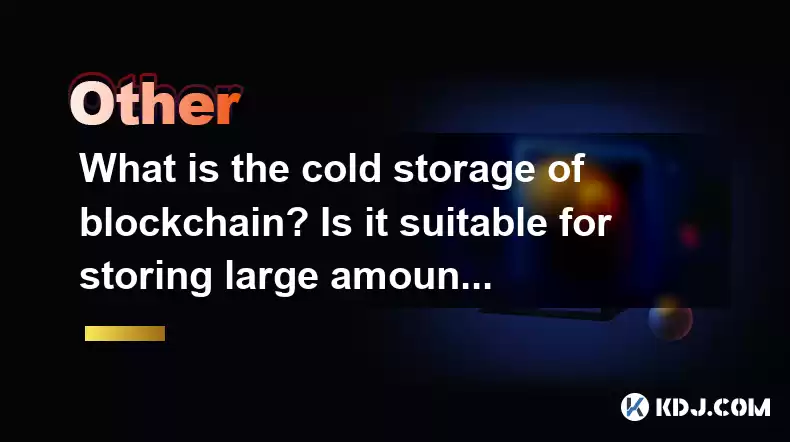-
 Bitcoin
Bitcoin $112400
-1.07% -
 Ethereum
Ethereum $3409
-3.27% -
 XRP
XRP $2.784
-6.60% -
 Tether USDt
Tether USDt $0.9997
-0.03% -
 BNB
BNB $739.3
-2.09% -
 Solana
Solana $158.0
-2.90% -
 USDC
USDC $0.9998
-0.02% -
 TRON
TRON $0.3213
-0.94% -
 Dogecoin
Dogecoin $0.1929
-5.01% -
 Cardano
Cardano $0.6974
-2.82% -
 Hyperliquid
Hyperliquid $36.69
-2.31% -
 Sui
Sui $3.327
-4.80% -
 Stellar
Stellar $0.3672
-5.18% -
 Chainlink
Chainlink $15.65
-3.07% -
 Bitcoin Cash
Bitcoin Cash $525.0
-1.68% -
 Hedera
Hedera $0.2291
-6.00% -
 Avalanche
Avalanche $20.91
-2.96% -
 Ethena USDe
Ethena USDe $1.000
0.00% -
 Toncoin
Toncoin $3.520
-1.12% -
 UNUS SED LEO
UNUS SED LEO $8.968
0.14% -
 Litecoin
Litecoin $105.7
0.26% -
 Shiba Inu
Shiba Inu $0.00001181
-1.79% -
 Polkadot
Polkadot $3.492
-2.08% -
 Uniswap
Uniswap $8.800
-3.10% -
 Dai
Dai $0.9999
-0.01% -
 Monero
Monero $289.9
-3.17% -
 Bitget Token
Bitget Token $4.243
-1.27% -
 Pepe
Pepe $0.00001006
-3.67% -
 Cronos
Cronos $0.1248
-5.68% -
 Aave
Aave $249.7
-2.50%
What is the cold storage of blockchain? Is it suitable for storing large amounts of assets?
Cold storage enhances crypto security by keeping assets offline, ideal for large amounts, but less convenient for daily transactions.
Apr 27, 2025 at 04:50 pm

What is the Cold Storage of Blockchain? Is it Suitable for Storing Large Amounts of Assets?
Cold storage in the context of blockchain and cryptocurrencies refers to a method of storing digital assets offline, away from internet-connected devices. This approach significantly enhances the security of cryptocurrencies by minimizing the risk of hacking and unauthorized access. Cold storage solutions are often recommended for individuals and institutions looking to safeguard large amounts of assets over the long term.
Understanding Cold Storage
Cold storage can take various forms, including hardware wallets, paper wallets, and even offline software wallets. The common thread among these methods is that they keep the private keys, which are essential for accessing and managing cryptocurrencies, completely offline. By doing so, cold storage reduces the vulnerability of assets to cyber threats, making it an attractive option for those with significant investments in digital currencies.
Types of Cold Storage
There are several types of cold storage solutions available, each with its own set of features and security levels. Understanding these options can help users choose the most suitable method for their needs.
Hardware Wallets: These are physical devices that store private keys offline. Popular hardware wallets include Ledger and Trezor. They are designed to be user-friendly and provide robust security features, such as PIN codes and recovery phrases.
Paper Wallets: A paper wallet involves printing out the public and private keys on a piece of paper. This method is cost-effective and straightforward but requires careful handling to prevent physical damage or loss.
Offline Software Wallets: These are software programs that can be installed on a computer that is never connected to the internet. Users can generate and store their private keys on this offline device, ensuring that the keys remain secure.
Security Benefits of Cold Storage
The primary advantage of cold storage is its enhanced security. Since the private keys are kept offline, they are not susceptible to online hacking attempts, malware, or phishing attacks. This makes cold storage an ideal solution for storing large amounts of assets, as the risk of losing funds due to cyber threats is significantly reduced.
Additionally, cold storage solutions often come with additional security features. For instance, hardware wallets typically require a PIN to access the device, and they also provide a recovery phrase that can be used to restore the wallet if the device is lost or damaged. These features add an extra layer of protection, ensuring that even if the physical device is compromised, the assets remain secure.
Suitability for Storing Large Amounts of Assets
Cold storage is particularly suitable for storing large amounts of assets due to its high level of security. For individuals and institutions with significant cryptocurrency holdings, the peace of mind that comes with knowing their assets are protected from online threats is invaluable.
However, it's important to consider the trade-offs. Cold storage can be less convenient than hot wallets, which are connected to the internet and allow for quick and easy transactions. Accessing funds stored in cold storage may require additional steps, such as connecting a hardware wallet to a computer or manually entering private keys from a paper wallet.
Despite these inconveniences, the security benefits of cold storage make it a preferred choice for long-term storage of large amounts of assets. Users can keep the majority of their funds in cold storage and maintain a smaller amount in a hot wallet for daily transactions, striking a balance between security and convenience.
Setting Up Cold Storage
Setting up cold storage involves several steps, depending on the chosen method. Here's a detailed guide on how to set up a hardware wallet, one of the most popular cold storage solutions.
Choose a Hardware Wallet: Research and select a reputable hardware wallet, such as Ledger or Trezor. Consider factors like security features, user-friendliness, and compatibility with the cryptocurrencies you wish to store.
Purchase and Unbox: Buy the hardware wallet from an official source or authorized retailer. Once received, carefully unbox the device and follow the manufacturer's instructions to ensure it has not been tampered with.
Initialize the Device: Connect the hardware wallet to your computer using the provided USB cable. Follow the on-screen instructions to set up the device, which typically involves creating a PIN and generating a recovery phrase.
Secure the Recovery Phrase: Write down the recovery phrase on the provided card or a piece of paper. Store it in a secure location, such as a safe or a safety deposit box. Never store the recovery phrase digitally or share it with anyone.
Install Wallet Software: Download and install the wallet software compatible with your hardware wallet. This software will allow you to manage your cryptocurrencies and interact with the hardware wallet.
Transfer Funds: Once the hardware wallet is set up, you can transfer your cryptocurrencies to the wallet's address. Use a secure internet connection and double-check the address to avoid sending funds to the wrong destination.
Verify and Secure: After transferring funds, verify that they have been received by the hardware wallet. Disconnect the device from the computer and store it in a safe place. Regularly check the device to ensure it remains secure.
Frequently Asked Questions
Q: Can I use cold storage for daily transactions?
A: While cold storage is ideal for long-term storage of large amounts of assets, it is not suitable for daily transactions due to its offline nature. For frequent transactions, it's better to use a hot wallet, which is connected to the internet and allows for quick and easy access to funds.
Q: What happens if I lose my hardware wallet?
A: If you lose your hardware wallet, you can still access your funds using the recovery phrase. This is why it's crucial to store the recovery phrase in a secure location. Without the recovery phrase, however, you will permanently lose access to your assets.
Q: Is cold storage completely immune to all types of attacks?
A: While cold storage significantly reduces the risk of online hacking, it is not completely immune to all types of attacks. Physical theft, loss, or damage to the storage device can still pose risks. Therefore, it's important to take additional measures to protect the physical security of your cold storage solution.
Q: Can I store multiple types of cryptocurrencies in cold storage?
A: Yes, many cold storage solutions, such as hardware wallets, support multiple types of cryptocurrencies. When choosing a cold storage method, ensure it is compatible with the specific cryptocurrencies you wish to store.
Disclaimer:info@kdj.com
The information provided is not trading advice. kdj.com does not assume any responsibility for any investments made based on the information provided in this article. Cryptocurrencies are highly volatile and it is highly recommended that you invest with caution after thorough research!
If you believe that the content used on this website infringes your copyright, please contact us immediately (info@kdj.com) and we will delete it promptly.
- BlockDAG, SEI, Ethena: Top Crypto Performers Under the Microscope
- 2025-08-03 10:50:16
- Bitcoin Blasts Past $119K: How Institutional Adoption and Macro Shifts Fuel the Fire
- 2025-08-03 10:55:16
- Crypto, Grok, and August: Decoding the Latest Trends and Insights
- 2025-08-03 11:10:16
- Crypto, Phishing, and Your Wallet: A New Yorker's Guide to Staying Safe
- 2025-08-03 10:30:16
- Troller Cat Meme Coin Presale Soars: A New King in the Crypto Jungle?
- 2025-08-03 10:30:16
- Grayscale, Altcoin Trust, and Mid-Cap Mania: What's the Deal?
- 2025-08-03 08:50:16
Related knowledge

What is the difference between on-chain and off-chain transactions?
Aug 02,2025 at 04:22pm
Understanding On-Chain TransactionsOn-chain transactions refer to digital asset transfers that are recorded directly on a blockchain ledger. These tra...

What is the double-spending problem and how does blockchain prevent it?
Aug 02,2025 at 01:07pm
Understanding the Double-Spending ProblemThe double-spending problem is a fundamental challenge in digital currency systems where the same digital tok...

What is the difference between a blockchain and a database?
Aug 01,2025 at 09:36pm
Understanding the Core Structure of a BlockchainA blockchain is a decentralized digital ledger that records data in a series of immutable blocks linke...

How does blockchain handle scalability?
Aug 02,2025 at 02:58pm
Understanding Blockchain Scalability ChallengesBlockchain scalability refers to a network's ability to handle an increasing volume of transactions wit...

What are the different types of blockchains?
Aug 03,2025 at 03:01am
Public Blockchains: Open and Decentralized NetworksPublic blockchains are the most widely recognized type of blockchain, characterized by their open a...

What is a hash in a blockchain?
Aug 02,2025 at 05:28am
Understanding the Concept of Hash in BlockchainA hash in the context of blockchain technology refers to a unique digital fingerprint generated by a cr...

What is the difference between on-chain and off-chain transactions?
Aug 02,2025 at 04:22pm
Understanding On-Chain TransactionsOn-chain transactions refer to digital asset transfers that are recorded directly on a blockchain ledger. These tra...

What is the double-spending problem and how does blockchain prevent it?
Aug 02,2025 at 01:07pm
Understanding the Double-Spending ProblemThe double-spending problem is a fundamental challenge in digital currency systems where the same digital tok...

What is the difference between a blockchain and a database?
Aug 01,2025 at 09:36pm
Understanding the Core Structure of a BlockchainA blockchain is a decentralized digital ledger that records data in a series of immutable blocks linke...

How does blockchain handle scalability?
Aug 02,2025 at 02:58pm
Understanding Blockchain Scalability ChallengesBlockchain scalability refers to a network's ability to handle an increasing volume of transactions wit...

What are the different types of blockchains?
Aug 03,2025 at 03:01am
Public Blockchains: Open and Decentralized NetworksPublic blockchains are the most widely recognized type of blockchain, characterized by their open a...

What is a hash in a blockchain?
Aug 02,2025 at 05:28am
Understanding the Concept of Hash in BlockchainA hash in the context of blockchain technology refers to a unique digital fingerprint generated by a cr...
See all articles

























































































